

Travel story – Putaoshan Village, China
Author: Andrea Cristofori
For a European tourist who arrives in Guilin alone, with no local connections and no previous experience of this area of China, there are no hopes of venturing out of the city’s core into the vast wonders this region has to offer. The only way to do so is to rely on one of the many tour companies that escort tourists on a series of standardised exploration paths. Coming from Central China, where temperatures have already turned chilly by late September, the humid heat of this corner of South-western China is the first impression a traveller gets when getting off of the plane. The second impression, however, is far less romantic: a multitude of tour companies stalls, lined up in the alleys of the airport, trying to catch the attention of newcomers with bright lights and colourful posters of idyllic locations. The workers constantly scream in a mix of stunted English and Mandarin, aiming both at Chinese and international visitors. Among others, they offer “cultural” tours, boat tours, culinary tours, and many other options, trying to convince the guests that their prices are the best. As I am walking past the stalls, I stop for a moment, lean my luggage on the wall, and evaluate my options. I always prefer travelling on my own with no specific plans, being free to go wherever I want with no restrictions, but I have to admit that here it would be really hard to get to certain places I really want to see just by myself. How would I reach remote locations deep into the countryside or high up into the mountainous regions? I decide to give it a try and, just for a couple days, rely on a tour company to explore this place. Thus, I approach one of the stalls and I choose to join a boat tour in the Yangshuo region and a cultural tour in the mountainous region around Guilin. The company’s worker will contact me via WeChat and provide all information. That is how, a couple days later, I was on a van with other tourists, climbing up the mountains towards the remote villages of the Yao people, listening to what our Chinese guide had to say about these places.
The region of Guilin, with its characteristic karst mountains, the jade-coloured rivers, and the inaccessible mountains, inspired poets and artists for centuries. Far away from the centre of early Chinese civilization, in the Yellow River valley, this frontier area was long perceived as wild, mysterious, distant. The strength and impressive works of nature in this area have always exercised great influence over the local communities, resulting in the wide spreading of Taoism and animism, as compared to the widely Confucian north of China. Nowadays, however, the towering peaks of the karst mountains and the meandering rivers flowing through the lush fields are no longer the only source of attraction for visitors. As tourism developed as a global phenomenon, communities and governments gained awareness of the value of their cultural and immaterial heritage, taking action to capitalise on them. In the case of Guilin, this means one thing especially: ethnic minorities. Officially, China is home to fifty-six ethnic groups. One of them, the Han, is “the” ethnic group, constituting about 92% of China’s population, and practically a synonym for “Chinese”. All other fifty-five groups are regarded as ethnic minorities. The Chinese word for ethnic group is 民族 minzu, where min means “people” and zu means “clan” or “ethnicity”. Technically, the Han too are a minzu, however, especially when travelling to these frontier areas, one has the impression that, while the Han are the people, other ethnic groups are heritage, because their value lies primarily in the wealth they produce through the display of their cultural heritage for visitors. As such, a specific image is constructed for the representation of ethnic groups’ identity and heritage in a way that may cater to local and international tourism, drawing a thin line between conservation of ethnic cultures and employment of such cultures to gain economic benefit through tourism. What is the situation of ethnic minorities in the Guilin region? How are they presented to visitors?
The Yao, who call themselves Mien (meaning “people”), are the most numerous ethnic minority living in southwestern China. They originated over two thousand years ago in the present day Chinese province of Hunan, and they gradually migrated southward as the Han Chinese expanded in central China. Today, most Yao people live in the Chinese province of Guangxi, but they are found also in the border areas of Guangdong and Yunnan, as well as in northern Vietnam, Laos, and northern Thailand. Because the Yao spread throughout such a large area, there are considerable linguistic and cultural differences between the various branches, which is why they are known with various ethnonyms, such as the Mian (in Thailand), the Man (in Laos), and the Zao (in Vietnam). Despite this, they consider themselves as a rather homogenous group, with a distinct identity.
After visiting the high altitude terraced fields of Longji, our van is heading to the village of Putaoshan, which literally means “Grape Mountain”. The visit to Putaoshan is part of a wider tour, which includes nature and minorities villages. These two elements are often paired in the offer of local tour agencies, in order to provide a comprehensive visit experience for this area. We already came into contact with the Yao during our visit to Longji, where, at the scenic spot on top of the mountain, a fake village was created as a facilities hub for tourists and as a market place for the Yao, who sell their trinkets and souvenirs for tourists. This ethnic group is known for their colourful traditional clothes, characterised by a bright pink tone, and for the long hair of the women, which grows so long that it is tied up on top of the head as if it was a hat. Before coming to the village, the guide, who told us he is a Han, gives a special warning for men: “Do not be surprised if local women pat your bottom, it is just their way to show appreciation to you”. Such warning has me reflecting. We are certainly not going to reach a remote community, but, rather, a community that receives hundreds of tourists every day during high season. I cannot not help but feeling that this folkloristic note is part of a bigger show rather than a spontaneous act of appreciation. However, I try to clear my mind from any judgement and be open to see whatever awaits in Putaoshan.
We arrive at the village in the late afternoon, when the sun is about to set. This is not by chance, since Putaoshan is renowned as an idyllic sunset spot and most tour companies organise trips to this place at this time of the day. In fact, the official name of this place is “Putaoshan scenic area”, where “scenic area” is the translation of fengjing qu, a term that anyone who travels through China learns to know, and that usually indicates a panoramic point that is also a hub for touristic activities, ideal for taking pictures, watching a show, and buy souvenirs. The village is located on top of a hill, and, in order to reach its core, we have to climb up for about fifty metres. It is only at the very last metres of our walk that the gate of the village appears, and immediately it feels like entering a fantasy world. The wooden gates are decorated with an abundance of buffalo skulls, tribal symbols, and colourful paints; while the Yao are waiting for us lined up in two rows at each side of the gate, wearing their traditional clothes. Interestingly, the clothes they are wearing are very different when compared to those I saw in Longji. Here the men wear a blue shirt covered by a black tunic, white short pants, and they cover the lower part of their legs with a black cloth wrapped around the shin, with orange decorative elements. Women, on the other hand, cover their upper body only with a black and blue top that rests on their shoulders and that is open to the sides, and they wear a short black and blue striped skirt and a similar cloth around the shin. The standardised clothes design and colours, and the fact that different places seem to have different designs, give a distinct characterization for each community. While the community of Longji was “the world’s first long hair village”, as stated on a sign displayed in the local performance theatre, this community of Putaoshan may perhaps be remembered as the village of the buffalo, considering how pervasive the symbol of the buffalo is either in the form of skulls or paintings.
In between the two rows of Yao people, there is a series of long bamboo sticks laying on the ground. As soon as locals see us arriving, both rows kneel to the ground and each person grabs an end of two sticks, beginning to knock the sticks on the ground and moving them to the left and to the right, following a musical rhythm. The guide explains to us that, if we want to be worthy of entering their village, we have to pass the test of their traditional dance game, which consists in jumping in between the sticks following the rhythm and avoiding touching them until the opposite end is reached. Immediately, it is clear how this tour aims to be entertainment, an immersive adventure experience that takes the visitor to another world, a world of imagination and of a remote past. The storytelling employed by the guide, who explains that we have to pass the test in order to enter the village, together with the exotic setting, locates this visit within a horizon that I would summarise with the words “entertainment” and “experience”, two key elements to make a tour attractive for tourists.
As I prepare to jump in between the bamboo sticks to reach the village gate, I observe how locals are clearly helping my tour mates to get through this dance test. I hope they will make it easy for me too and I can be considered worthy of entering the village! Fortunately, even though when my turn comes I touch the sticks with my feet several times, the gates of the village eventually open for me as well. Now that I obtained the permission to pass the threshold, what will happen? Will they paint my face? Will I receive a necklace made from buffalo jaws? Actually, none of this happens, but the village turns out to be a sort of exhibition of Yao culture. Our group follows a path that climbs the hill passing through a few caves in the mountain. All around us there are buffalo skulls, wooden structures, hanging baskets, totems with local inscriptions, and red ribbons tied to the tree branches, all of which makes up for a great and impactful background scenery for our tour.
As tourists start taking pictures here and there, we reach the upper part of the village, which is steeped in lush greenery and the golden light of the sunset. I start wondering whether this is a real village or a fictitious spot to exhibit Yao culture in a sort of exaggerated version. In fact, I do not see actual houses or people involved in everyday activities, but just a single path on which there are a series of “stations”, each dedicated to an aspect of Yao culture. Interestingly, there is a considerable amount of space dedicated to women, with particular emphasis on traditional clothing. As we pass by, we can see a local woman using the traditional weaver machine, but there is no way to communicate with her. We just pass as if in front of an artwork in a museum, and, while some tourists refer to the guide to ask information, I prefer to read information on the informative panels that are available at each station. A brief explanation is provided about the importance of weaving for the Yao, but what I find the most unsettling is the description of female traditional clothes, as it is highlighted that their shirts are open to the side, leaving part of their chest visible, almost as an invite for the public to try having a look. This description sounds to me like a sexualisation of Yao women, as their body and clothes are employed to evoke interest in tourists following their norm rather than that of the Yao. By highlighting this aspect as an unusual characteristic and by inviting the glance, the bodies of Yao women are assigned sexual value through the application of a norm on what parts of the body should be covered that is owned by tourists, thus placing visitors in a position of power. I feel disturbed and I look around, trying to spot the same feeling of uneasiness in my fellow tourists, but all we do is just follow the path and moving on.
The following stations appear more promising, with information about a peculiar kind of writing, the women’s writing, that Yao women developed in opposition to the Han Chinese characters that were only taught to men, and that only Yao women can write and read. Again, we see a woman sitting on the floor and busy painting a cloth with a traditional Yao motif, then we pass by drums and musical instruments, and even by an exhibition station about wine production, with big pots filled with rice wine boiling on the fire. The smoke created by fire contrasts with the sunlight filtering through the tree branches, creating a very mysterious scene that many of us want to photograph. By now, it is obvious that Putaoshan is more of an exhibition centre than an actual village, with local Yao being actors that perform various aspects of their culture in front of tourists. However, there is little to no communication at all between the group and the local community, and most information is conveyed by the panels or by the guide, who is not
“Entertainment” and “experience” are the two representative words that came to my mind at the beginning of our visit, to which I would add “exhibition” and “performance” at the end of the tour. Putaoshan is a place of cultural exhibition, a place that aims to preserve Yao culture through performative acts for tourists, and that therefore also aims to produce economic benefits. Such performance, however, is more of a show than an exchange, as there is a clear perceived distance between the Yao and the visitors. Throughout our tour, even if most of the Yao greeted us, it always felt like we were in two separate worlds, and we were just observers passing by. Moreover, the dimension of show is highlighted by the last station, once again a theatre, similar to the one I saw in Longji, where our group sits to watch a show performed by the local community. It is a wooden structure, with a large painting of a mythical creature, a sort of griffin, standing behind the stage. Here we watch the Yao perform traditional dances running in big circles, acrobatic exercises, and even a performance with fire. A big round of applause as the artists bow multiple times to the public ends this encounter between us and the Yao. I slowly walk out of the theatre in the middle of the continuous mandarin chattering around me, and I follow the group to the final stage of our visit: a large terrace on the top of the hill, where everyone takes a perfect picture of the sunset. This is the seal of the experience, the picture that certifies that we have been to Putaoshan, and the mark that states that we have come to the end of the exhibition. With this iconic photo of the sunset from the top of the hill, our immersive experience comes to an end and we head back to the van, which also represents coming back to the real world, or maybe, more simply, to the ordinary Han China.
After my visit to Putaoshan, I am convinced that this place tells more about the visitors than it does about the Yao. The scheduled visit at sunset, the initial game with bamboo sticks, the single path through the village, the exhibition of Yao culture, the artistic performance, the panoramic lookout. All of this tells something about the entertainment aspect of tourism, and the ways in which tourism has created and shaped “traditional cultures”. In the case of Putaoshan, the impression I got is that tourism has specifically carved out Yao culture to turn it into a product, an experience that can be enjoyable for a tourist, that can leave tourists with the feeling that they have tried something different, learned something new, or experienced something interesting and unique. Putaoshan can teach us a lot about what drives tourism and what tourists expect to see, as the exotic and flashy setting of the village, alongside with the representation of the Yao and their activity, seem to reflect an expectation of an ethnic group, rather than an actual reality. What drives tourism is the fulfilment of an expectation, thus it is the actualization of the expectation that is provided in a place like this village, and expectation also becomes the setting to present the Yao’s cultural heritage. Is this the way to preserve cultural heritage in the era of mass tourism? What is the border between cultural conservation and appropriation? Would a Yao still be a Yao if he or she lived in an apartment and wore jeans and shirt? As I have these questions in my mind, I think it is a pity that, with such a beautiful heritage, we have not been able to see the Yao express themselves in non strictly performative ways, but just as vehicles of their heritage rather than as people. While we head back to Guilin on the van, I wish I would have a chance to meet the Yao once again out of the expectation setting, even if they wear jeans and shirts.

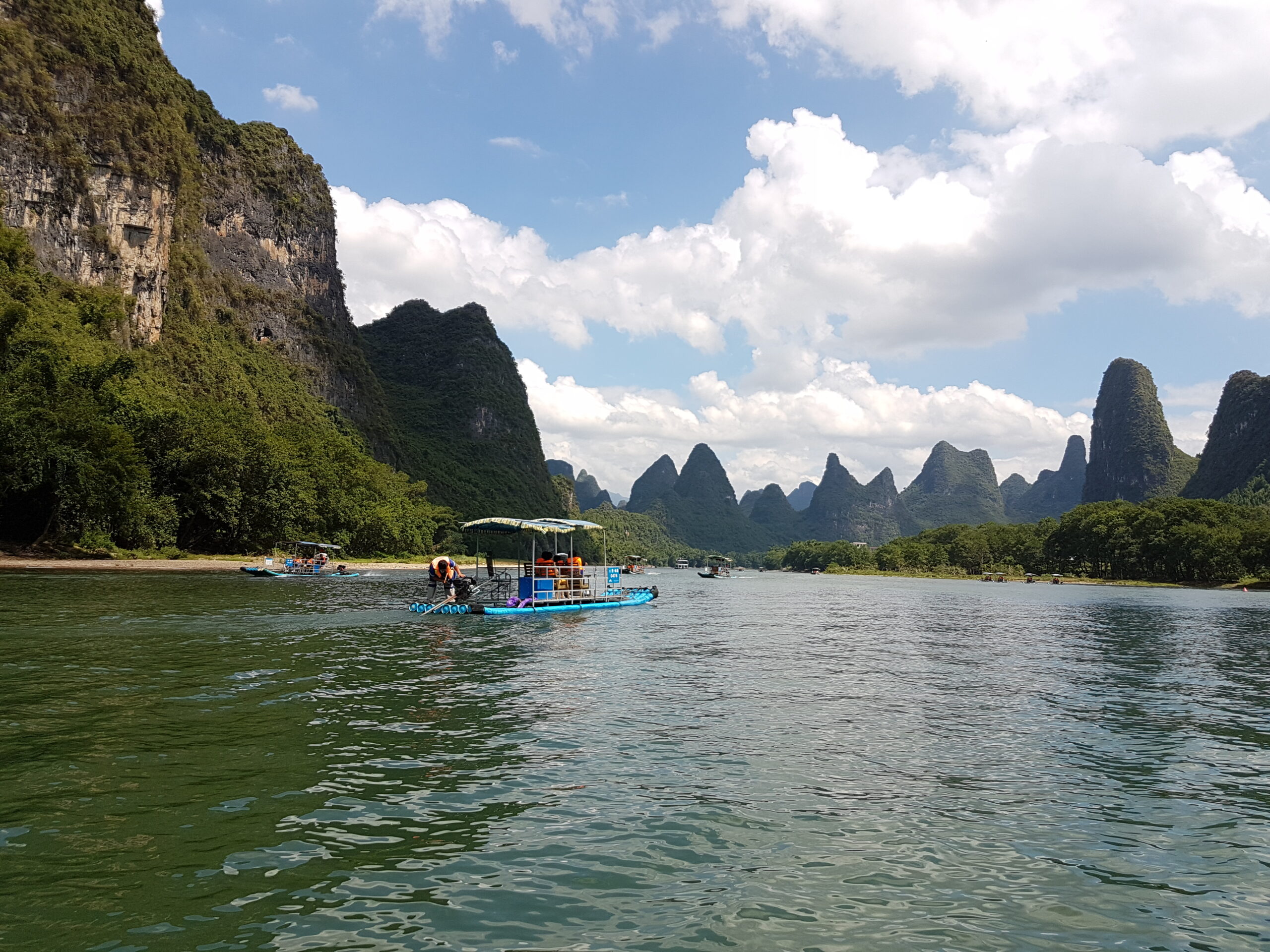
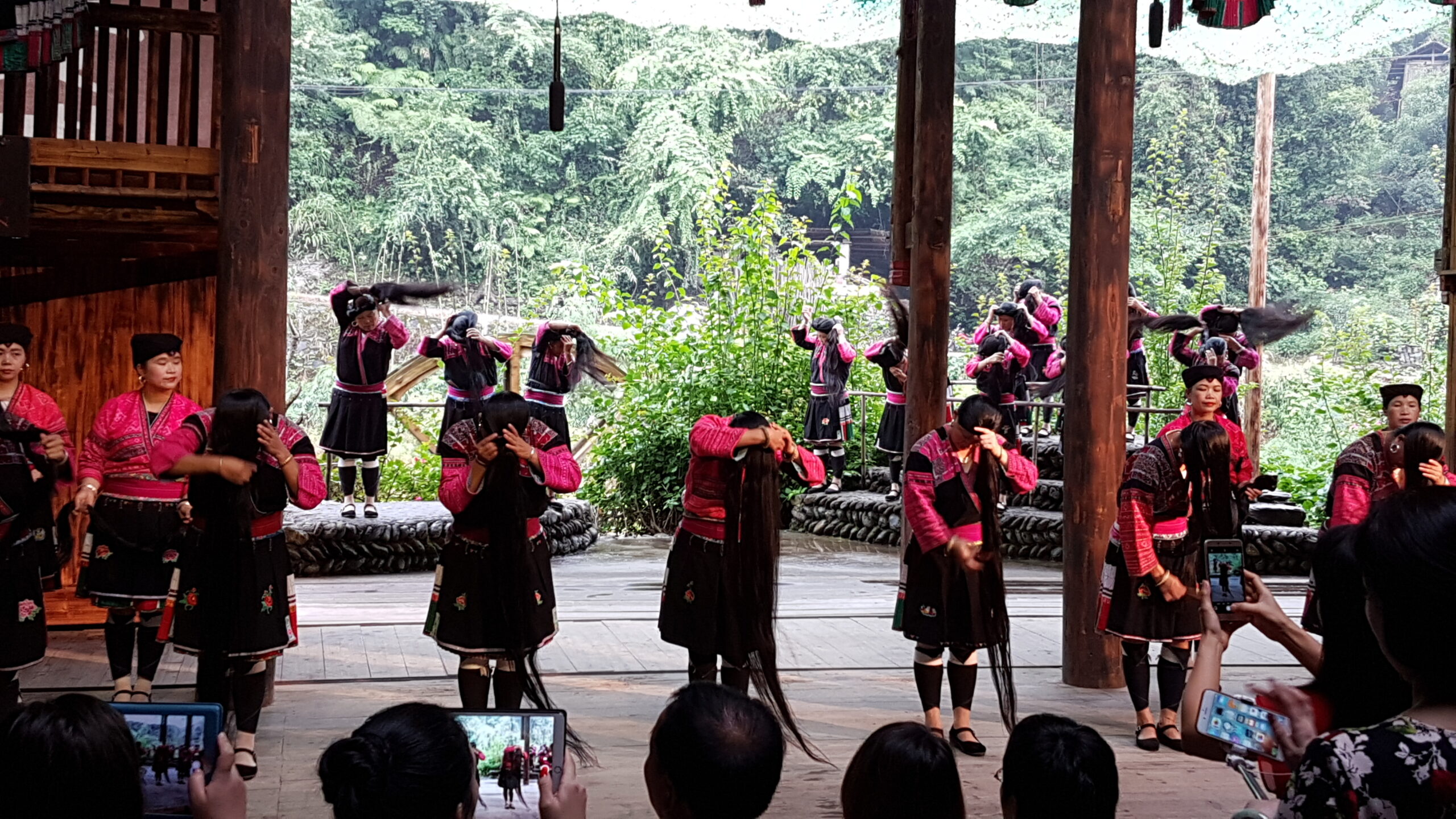
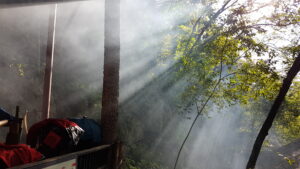
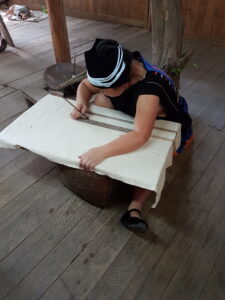
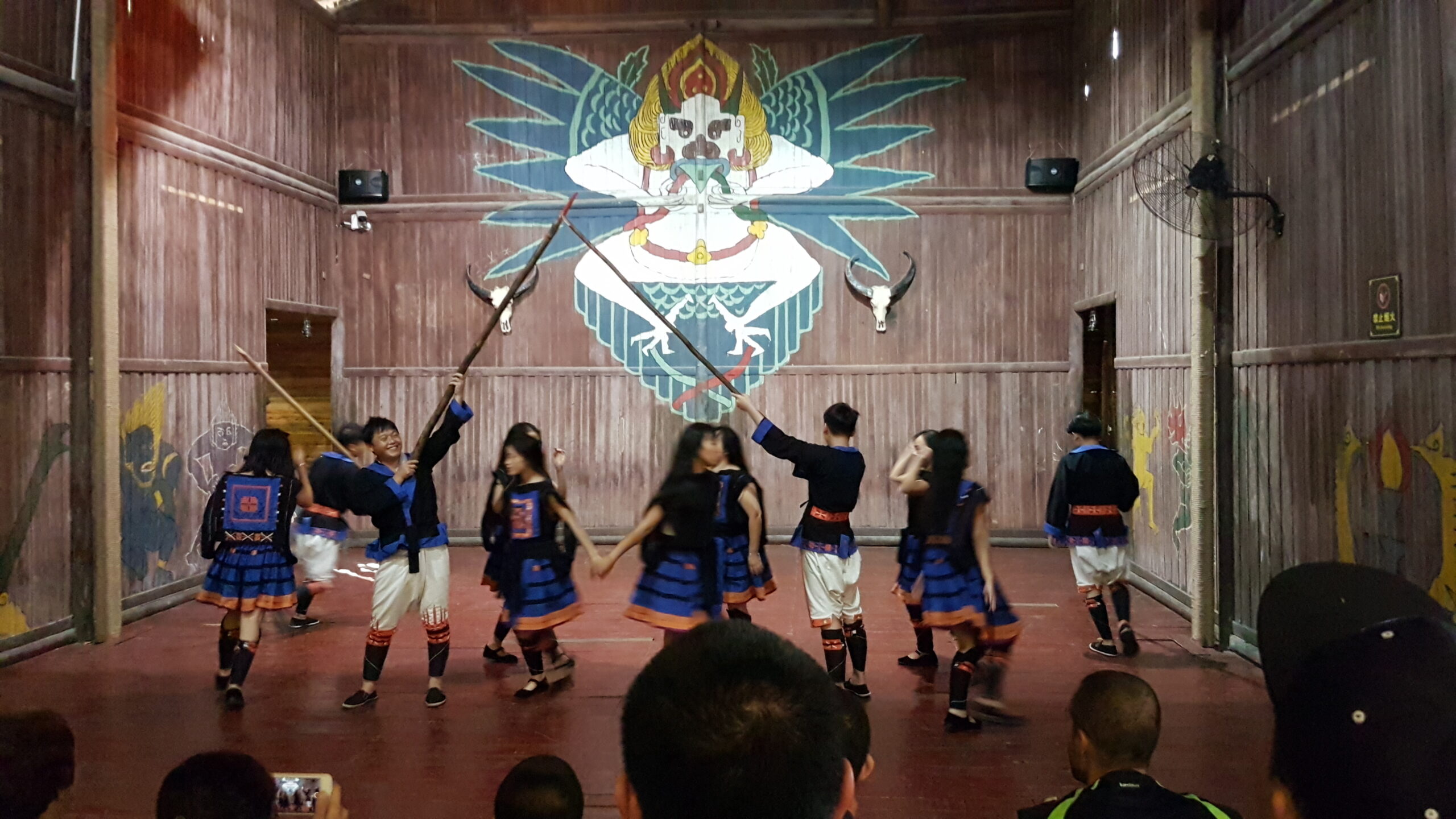
This Post Has 0 Comments